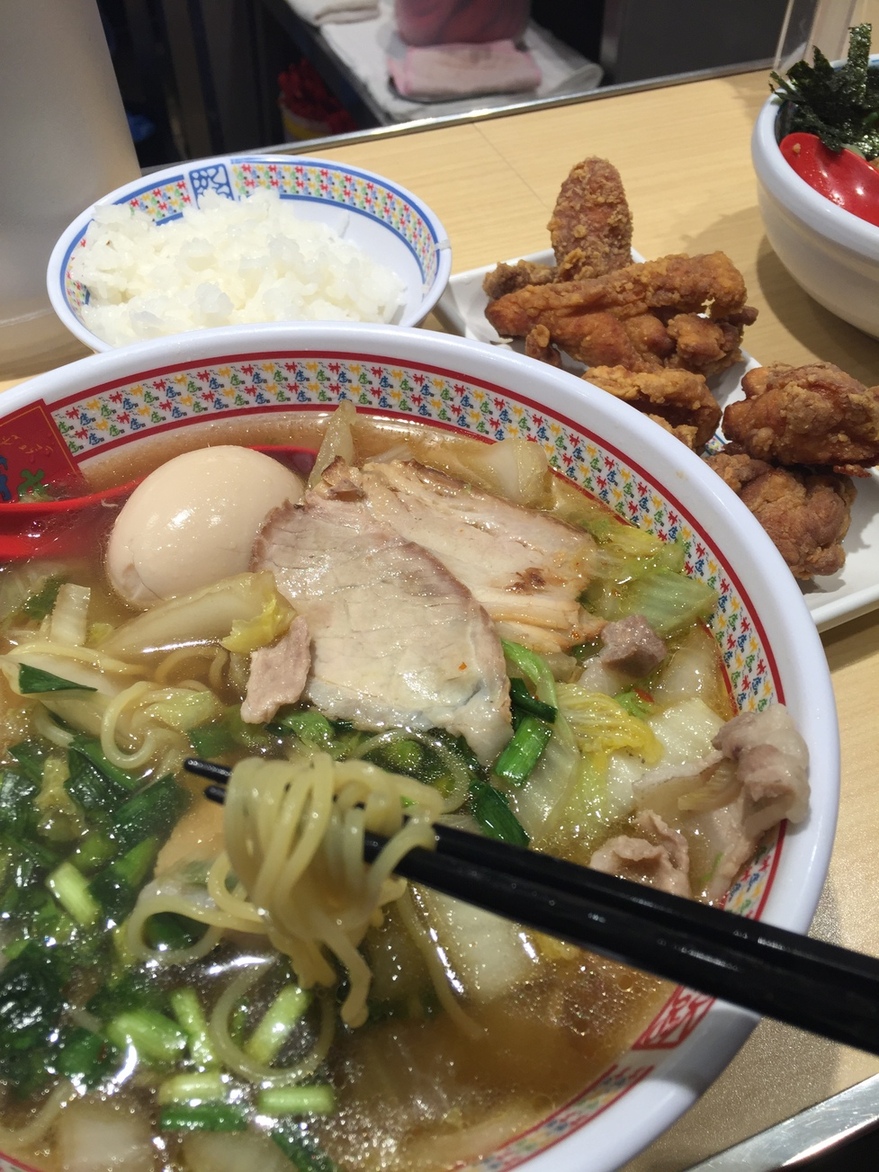Everyone’s familiar with the instant kind, and the real thing – stock simmered for hours, hand-made noodles, regional variations – has caught on in the US and other countries. But ramen hasn’t always been so central to Japanese cuisine. “Given its birth as a foreign import, and the central role that foreign wheat plays in the dish, it’s odd that ramen would become a symbol of traditional Japan, but that’s exactly what happened.” In this blog post, I catalog the types of ramen I’ve had so far in the Osaka area with added commentary from my Japanese friends. First, let’s talk a little about the basics of ramen.
4 Main Types of Ramen
Shio 塩 means salt and this is traditionally the way Ramen soup is flavored. All Western broths would be considered of the Shio type. The salt doesn’t affect the appearance of the broth and therefore Shio soup tends to be light colored and clear. Shio flavored soup will tend to be a tad saltier than the other types.
Shoyu しょうゆ means soy sauce and this is the next flavour type. Instead of salt, a sauce made by fermenting soya beans is used to make the broth salty. This sauce is not your regular table soya sauce, but typically a special sauce with additional ingredients made according to a secret recipe. The broth for Shoyu is the only type that tends not to contain pork. Shoyu soup is also usually clear, but is dark coloured and sweeter than Shio soup.
Miso 味噌 In more recent times, Miso paste has also been used to give Ramen broth its savoury taste. If Miso is used, it is immediately obvious as the soup will be opaque. Shio or Shoyu flavored soups merely accent the flavor of underlying broth, while miso leaves a fuller complex taste in the mouth since it also has a strong taste of its own.
Tonkotsu 豚骨 is technically not a true flavour since it is contains either salt or soy sauce. It is made from boiling ground up pork bones (ton=pig, kotsu = bones) for 12-15 hours till all the collagen has dissolved into the stock as gelatine (details here). The result is a rich whitish soup that is distinct enough to consider Tonkotsu as a separate fourth flavour of Ramen. To be clear, the use of pork bones does not automatically mean the soup is of the Tonkotsu type. If the pork bones are boiled whole for a relatively shorter period, the result is just regular pork broth.
Ramen in Osaka

Kamakura Ramen this easily accessible chain restaurant is a great way to get your ramen without fuss. You order up front and pay before being seated at the bar and served. They offer an English menu (their website has an English option as well), will customize your order (as priced by the menu), and offer all of the standard sides like karaage chicken, gyoza, etc. My friend, Sayuri agrees that this is “standard, good but not the best but not the worst,” place you can go to if you’re in a pinch with a craving. You can find locations in Kansai, Kanto, and Aichi.

Yottekoya is a little more under the radar. The only place I’ve seen is near Hirakata Station in Osaka. In fact, I’d probably walked past it a bunch of times until one day, my friend and I befriended some Japanese people on the street who suggested we go eat out together here. Our new Japanese friends had never been here before, but were excited once we were seated because “it’s cheap and looks delicious.” Much less accessible if you don’t speak Japanese as the entire menu is in Japanese with very few pictures. I ordered a spicy dish and a beer set for around 700 yen. Though there may not be places like this all over, I encourage you to keep your eyes peeled for hole-in-the-wall places like this one.

Tomako Ramen is another place that I’ve only seen in Hirakata, but it’s one of my favorite “un”traditional food places. The main feature of this shop is that their specialty is made from a tomato-soup like base rather than the 4 traditional types noted above. Their recommendation or おすすめ (osusume) is that you order rice with melted cheese on top. This comes at the end of the meal (once the noodles are gone) to help soak up the remaining broth and be eaten. I’ve gone here a few times, getting mixed reactions from my Japanese friends. Sayuri said, “it’s delicious but it’s not ramen. It’s like pasta.” Another Japanese friend said they “like[d] it but it’s not the same as real ramen” and a third friend noted “it’s good and [they] will come back here to eat again.”
